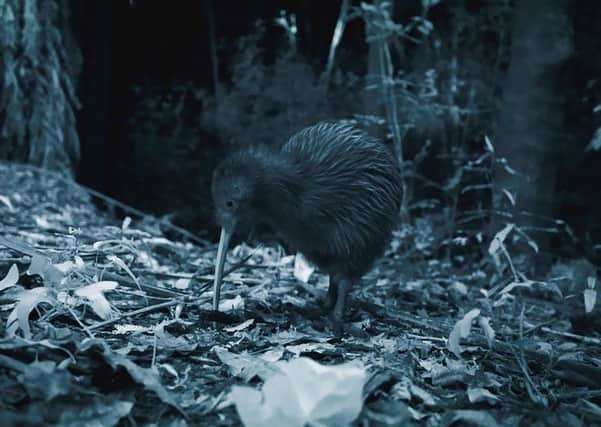Kiwi courting ritual sums up New Zealand!


The lady activists may not know whether to hate or love this effort from the Beeb’s superb natural history department. The confusion is all down to NZ’s strange national emblem, the kiwi, the flightless bird with unusual mating habits.
The male (the rascal) pursues the female relentlessly, in the forest, in the dead of night, using his long beak to peck at her, um, posterior. She doesn’t much fancy this initially, but it eventually turns her on, she sings and succumbs, and they finally do ‘the biz’.
Advertisement
Hide AdAdvertisement
Hide AdThe kiwi habits were just one segment in this superb programme narrated by Sam Neill, New Zealand’s most famous film actor (Omen III and Jurassic Park), although he was born in Omagh, County Tyrone, where his father was an Officer in the Irish Guards.


There are many twists and turns in the life of NZ, where some of the wildlife dates back 200 million years. It’s fitting that Neill should describe it. For the strange lizard tuatara, found deep in the valleys, dates back to the Jurassic age, which he espoused, along with the great Richard Attenborough, in the film series.
He touches on many idiosyncrasies. Parrots playing in the snow. Maoris creating wonderful carvings from ancient trees. Magnificent sperm whales lazily swimming off-shore. Dolphins leaping and spinning in mid-air as they pursue their prey – or maybe just for the sheer heck of it.
Neill also explained that deep and dangerous Pacific geographical fault lines (or plates) split the landscapes hither and thither, creating hot springs and earthquakes, shown graphically with the recent destruction of Christchurch – and how the population is coping, having faced a £17bn bill to re-build. Some 20,000 tremors per year are recorded in NZ.
Advertisement
Hide AdAdvertisement
Hide AdFascinating animals – one species introduced and the other a force of nature - dominated the programme. Tough sheep farmer Kate ran the family sheep station, and each spring, her flock of 4,000 is turned out onto the mountains to graze and fend for themselves. The cute little species, with their home-grown woolly hats, spend the warm season high in the mountains.


They have to be mustered in the autumn, and off Kate set in a helicopter (piloted by her brother Davy) with a team of sheep dogs on board. By the end of the day, the lost sheep were found and were being driven down the valley to winter in the plains.
The piece de resistance was the life of penguins which had settled, of all places, deep in the forest on a remote, uninhabited island, where they reared and fed their young. They were in their element, although the same couldn’t be said for the camera crew who had to trudge inland on this island in the roaring sub-Antarctic. They had to avoid an angry-looking sea lion which seemed to be on-guard outside the crew’s hastily constructed loo, with one of the cameramen desperate for a spot of relief.
Finally, though, let’s appease the feminists with the full story of the kiwis. She’s no fool, the lady kiwi. She lays her single egg in the male’s burrow and leaves him to do the incubation, which he carries out with true parental dedication, while off his mate trots and leaves him to it. The process takes three months and he loses 25 per cent of his body weight.
Advertisement
Hide AdAdvertisement
Hide AdI haven’t yet read any comments on the show from the feminists on my Facebook page. No doubt they’ll disapprove at the pecking of the bum. But they’ll heartily agree with the male of the species doing the hard work while the chick develops in the egg.
I do hope they approve…